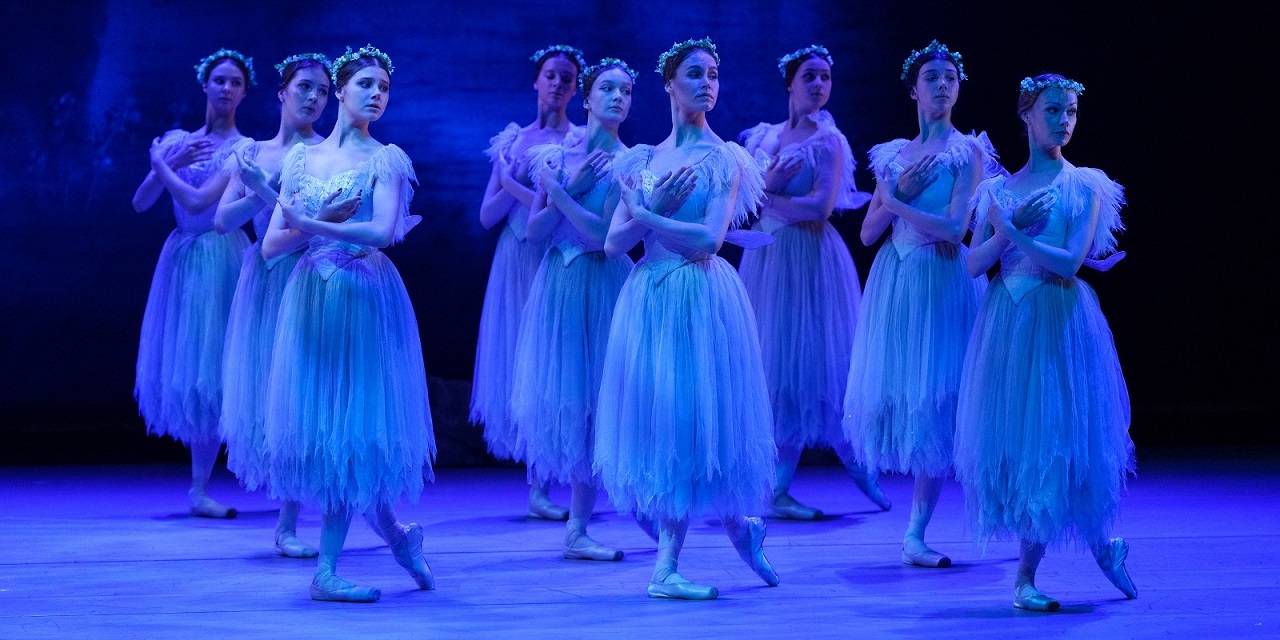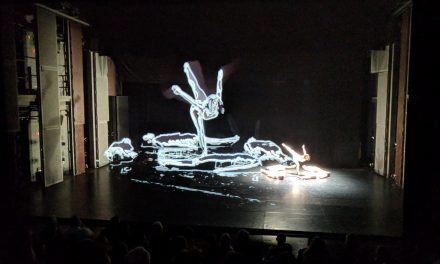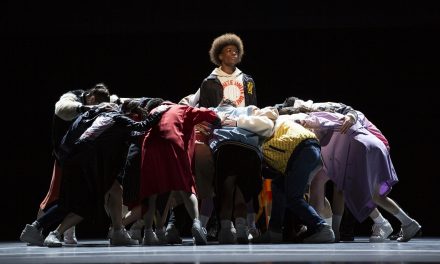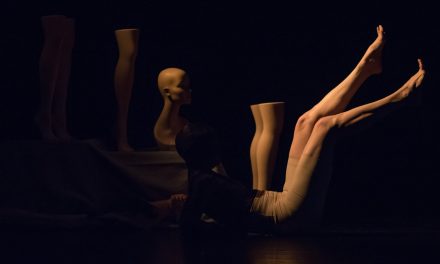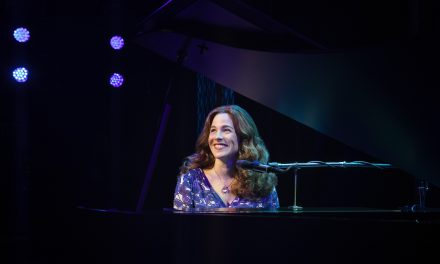The United Ukrainian Ballet (UUB) performed Alexei Ratmanksy’s debut of Giselle at the Segerstrom Center for the Arts this past Thursday evening and brought diplomatic dance back to the forefront of American audiences. In collaboration with Liev Schreiber and Henry T. & Elizabeth Segerstrom Charitable Foundation, ticket proceeds went to benefit BlueCheck Ukraine which funds Ukrainian led local and grassroots frontline organizations providing lifesaving humanitarian aid to victims of the Russian invasion.
The ballet company, composed of 60 professional artists, have found themselves ostracized from their home and national working theaters in Kyiv, Kharkiv, and Odessa. Under the artistic direction of Igone de Jongh, the company has found refuge at its home in The Hague, Netherlands and have been able to tour their performances in London, Amsterdam, Singapore, Sydney, and Washington to name a few. With media and news headlines being primarily occupied with our justice systems’ spectrum of innocent vs accused, it was a reminder to everyone in a velvet seat that a war is still happening. It was also a powerful message that, once again, nations turn to the power of art to deliver an emotional message on strength, perseverance, and hope.
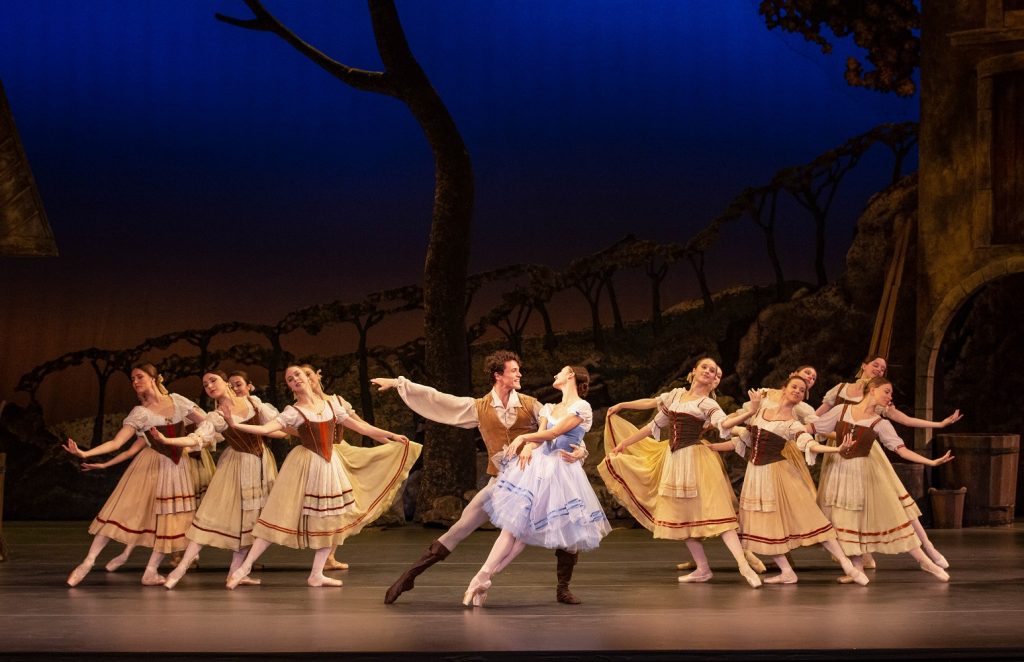
United Ukrainian Ballet in “Giselle” -Alexis Tutunnique as Albrecht and Cristine Shevchenko as Giselle, Act 1 – Photo: ©Mark Senior
It is of no surprise that Ratmansky, a Ukrainian citizen, chose Giselle for the company’s west coast debut. With the ballet being rooted in themes of love, betrayal, death and redemption, Ratmansky quotes, “Creating Giselle offered all of us some catharsis.” The story follows a beautiful peasant girl (Giselle) who loves to dance despite her weak heart, who falls madly in love with a nobleman in disguise (Albert). When the gamekeeper (Hilarion) reveals Albert’s true identity, Giselle goes mad and dies from the realization that her loved one has deceived her and lied. When Hilarion mourns Giselle at her gravesite, the ghostly apparition of the Wilis make him dance for so long that he too, dies from exhaustion. When Myrtha, Queen of the Wilis, discovers Albert mourning at Giselle’s gravesite, she intends to give him the same fate; however, Giselle’s shadow appears and her self-sacrificing love protects Albert until morning when the Wilis lose their enchanting power. As the light of dawn approaches, Albert’s life is saved, and Giselle returns to her deathly grave. With music by Adolphe Adam, and Pacific Symphony Orchestra, conductor Gavriel Heine amazed the audience with incredible precision of a classic tale, who’s music was just as important as the choreography itself.
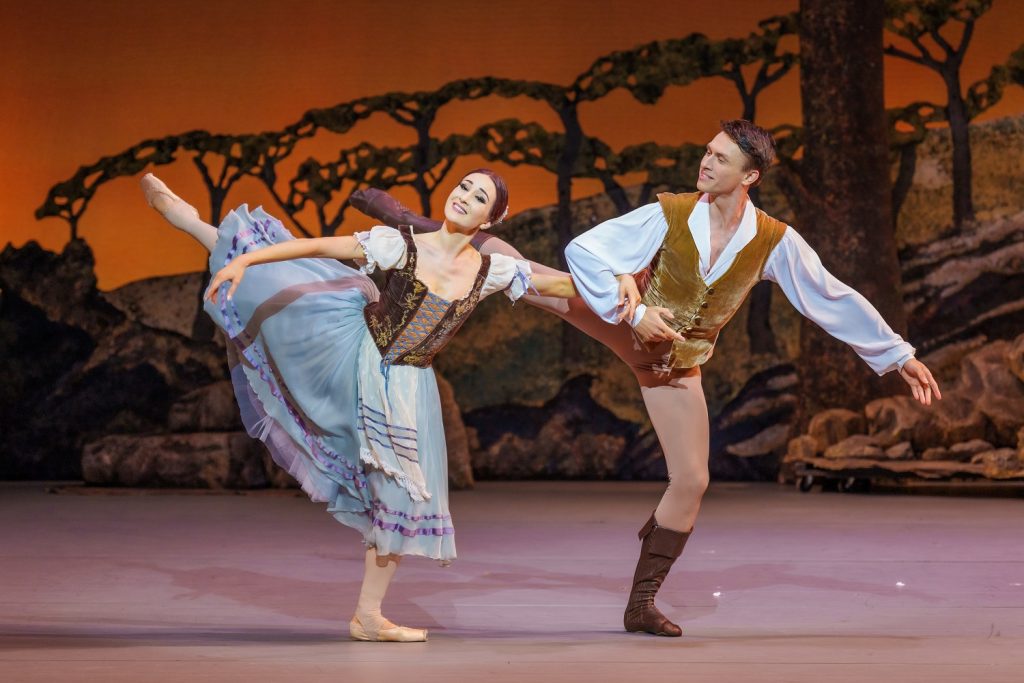
Elizaveta Gogidze as Giselle and Oleksii Kniazkov as Albrecht, Act 1 – United Ukrainian BalletGiselle – Photo: ©Altin Kaftira
The beautiful Elizaveta Gogidze, originally from Kyiv, Ukraine starred as Giselle on opening night. Carrying both the flirty happiness of a teenager in love with the madness a heartbroken shock can bring, Gogidze’s performative range was not only monumental, but beautifully executed. With the role of Albert, played by Ukrainian national Alexis Tutunnique, the pair bewitched the lovers with both innocence of life and wisdom in death. Myrtha, performed by Vladyslava Kovalenko, was especially memorable in Act II as Queen of the Wilis. She was forceful yet soft, giving the exact depiction of a phantom rooted in loveliness but with an agenda for the living. With sets and costume design by Hayden Griffin and Peter Farmer, the fantastical whimsy was displayed with touches of realism bringing back the spectacle ballet used to be. They used fake flowers that the performers could pull directly from rocks, and veils attached to strings that were pulled by seemingly no one backstage from the heads of those dancing on stage. It is this attention to detail that made the evening rooted in dark Victorian mystery and show, as the ballet once intended.
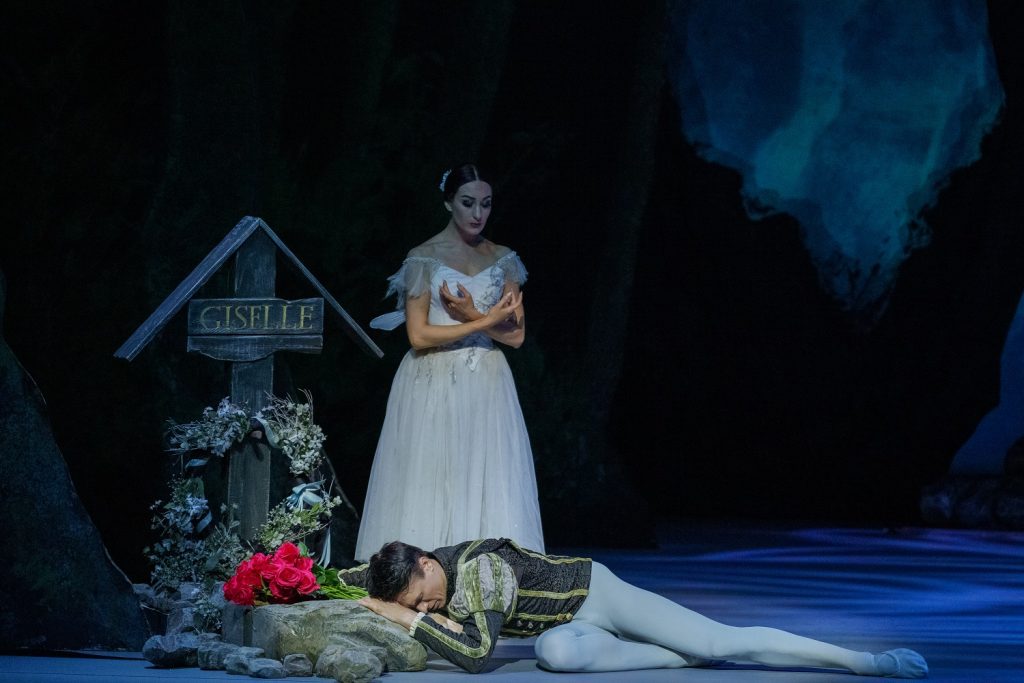
Elizaveta Gogidze as Giselle and Oleksii Kniazkov as Albrecht, Act – United Ukrainian Ballet – Photo: ©Altin Kaftira
Perhaps the most memorable part of the evening was the surprise premiere of Airlift choreographed by Emma Evelein to music by Ernst Reijseger. Airlift was performed by members of UUB along with guest performer Oleksandr Teren, who in August of last year had both legs amputated after he was hit by a shell while fighting on the frontline of the war. While rehabilitating in Orlando, UUB soloist Tutunnique invited Teren to see Giselle during the Kennedy Center performance in Washington D.C. and has since been incorporated into a new dance work. With a stark center stage spotlight, Teren sat without prosthetics in uniform, repeating a series of movement motifs with his upper body. Floodlights filled the stage, and the company in tight dark/neutral one pieces emerged from the floor and swarmed Teren with large swooping movements and lifts, re-enacting the disorientation of war, of fighting, of panic.
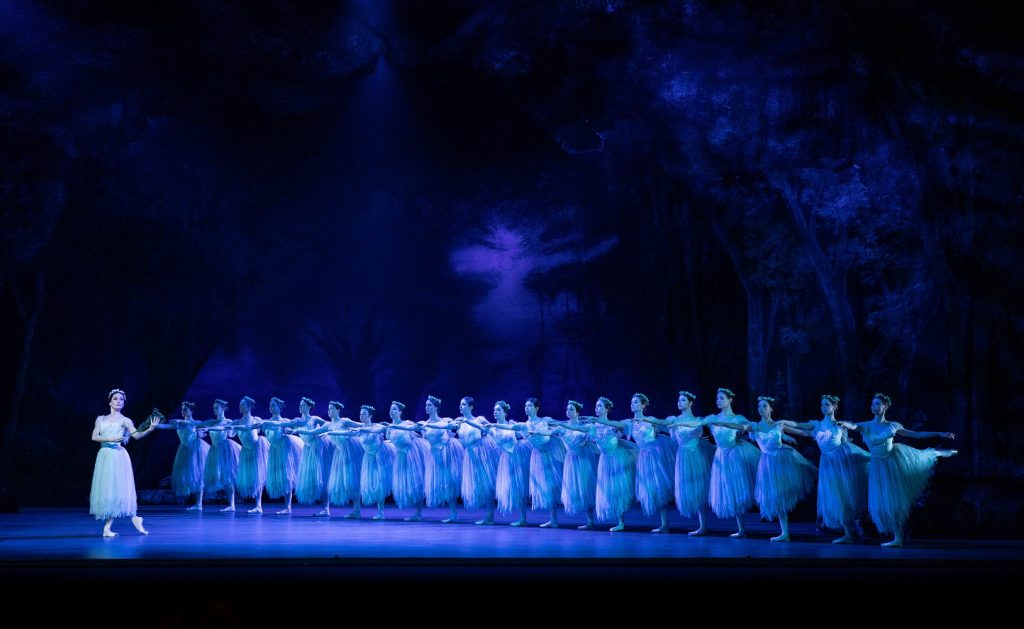
The Willis and Elizaveta Gogidze as Myrtha, Act 2, “Giselle” – United Ukrainian Ballet “Giselle” – Photo: ©Mark Senior
With a standing ovation and singing of the Ukrainian national anthem during final bows, the company celebrated the representation and awareness of their country’s hardships more than the rendition of Ratmansky’s Giselle characters. With each bow, the audience clapped for the tenacity and endurance of each dancer as performers and people rather than the technique of their craft…and it felt wholesome, true, and deserved. In dance, we stand for Ukraine, a country that’s consistently stood for its art and independence. Since its first performance in Paris of 1841, Giselle proves over and over again that love knows no bounds, and even in death, we can continue to dance with the memory of those we have lost but have not forgotten.

Former Ukrainian soldier Oleksandr Teren and members of the United Ukrainian Ballet – Photo by Karolina Kuras, Courtesy of United Ukrainian Ballet and Segerstrom Center for the Arts
To learn more about the United Ukrainian Ballet, please click visit their website.
To make a donation to support their cause, please visit BlueCheck Ukraine.
To see the full season of performances at The Segerstrom Center for the Arts, please visit their website.
Written by Grace Courvoisier for LA Dance Chronicle.
Featured image: The Willis, Act 2 – United Ukrainian Ballet’s Giselle – Photo: ©Altin Kaftira

